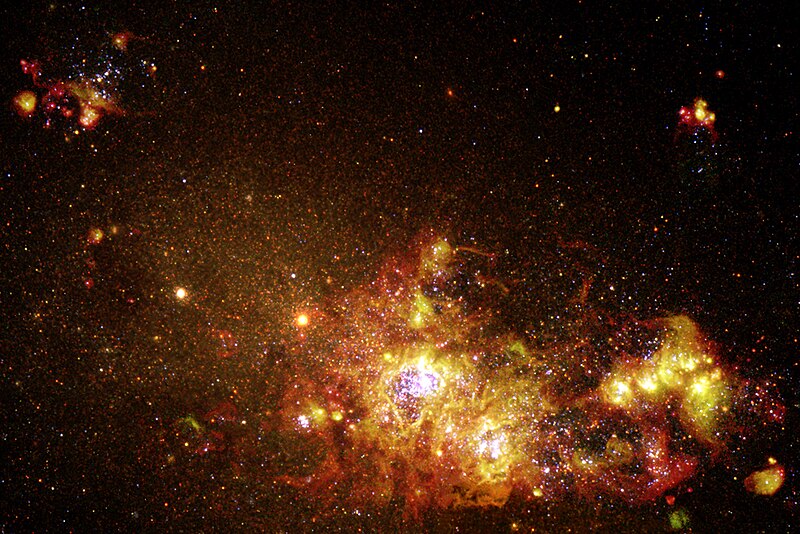Berkas:Fireworks of Star Formation Light Up a Galaxy - GPN-2000-000877.jpg
Tampilan

Ukuran pratayang ini: 800 × 534 piksel. Resolusi lainnya: 320 × 214 piksel | 640 × 427 piksel | 1.024 × 683 piksel | 1.280 × 854 piksel | 1.596 × 1.065 piksel.
Ukuran asli (1.596 × 1.065 piksel, ukuran berkas: 1,67 MB, tipe MIME: image/jpeg)
Riwayat berkas
Klik pada tanggal/waktu untuk melihat berkas ini pada saat tersebut.
| Tanggal/Waktu | Miniatur | Dimensi | Pengguna | Komentar | |
|---|---|---|---|---|---|
| terkini | 9 April 2009 00.41 |  | 1.596 × 1.065 (1,67 MB) | BotMultichillT | {{Information |Description={{en|1=Located some 13 million light-years from Earth, NGC 4214 is currently forming clusters of new stars from its interstellar gas and dust. In this Hubble image, we can see a sequence of steps in the formation and evolution o |
Penggunaan berkas
Halaman berikut menggunakan berkas ini:
Penggunaan berkas global
Wiki lain berikut menggunakan berkas ini:
- Penggunaan pada af.wikipedia.org
- Penggunaan pada ar.wikipedia.org
- Penggunaan pada ast.wikipedia.org
- Penggunaan pada el.wikipedia.org
- Penggunaan pada en.wikipedia.org
- Penggunaan pada es.wikipedia.org
- Penggunaan pada eu.wikipedia.org
- Penggunaan pada fr.wikipedia.org
- Penggunaan pada hr.wikipedia.org
- Penggunaan pada it.wikipedia.org
- Penggunaan pada ja.wikipedia.org
- Penggunaan pada ko.wikipedia.org
- Penggunaan pada lb.wikipedia.org
- Penggunaan pada mk.wikipedia.org
- Penggunaan pada nl.wikipedia.org
- Penggunaan pada no.wikipedia.org
- Penggunaan pada pl.wikipedia.org
- Penggunaan pada pt.wikipedia.org
- Penggunaan pada ro.wikipedia.org
- Penggunaan pada si.wikipedia.org
- Penggunaan pada sk.wikipedia.org
- Penggunaan pada sr.wikipedia.org
- Penggunaan pada tr.wikipedia.org
- Penggunaan pada uk.wikipedia.org
- Penggunaan pada vi.wikipedia.org
